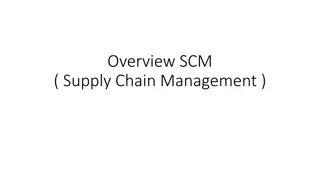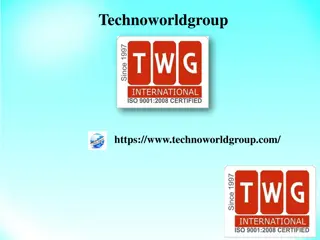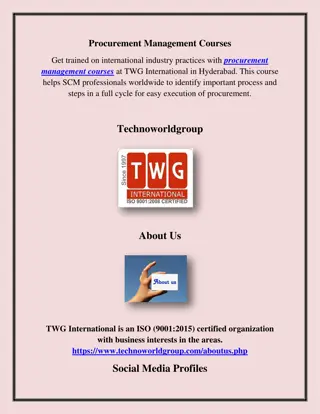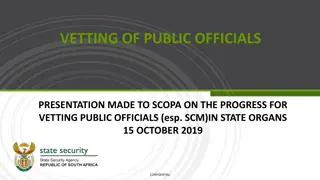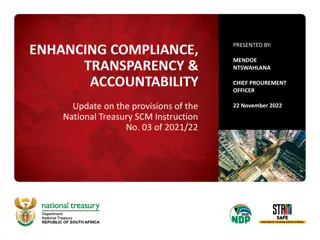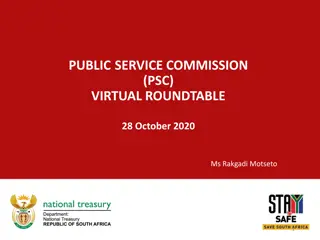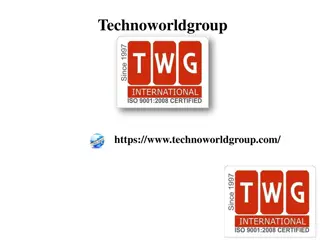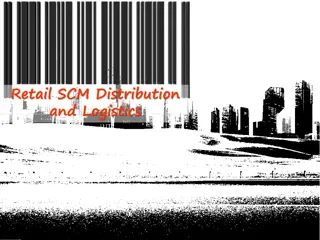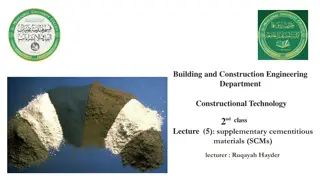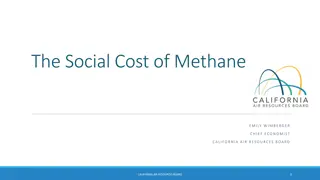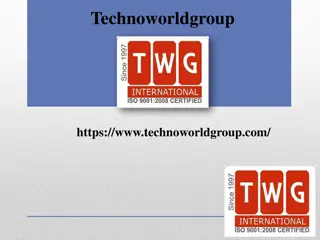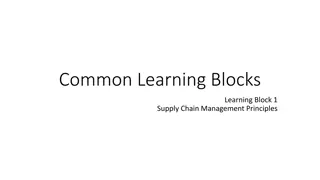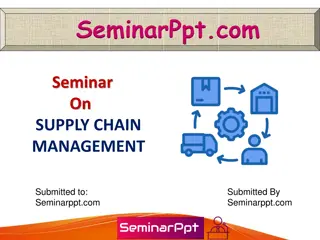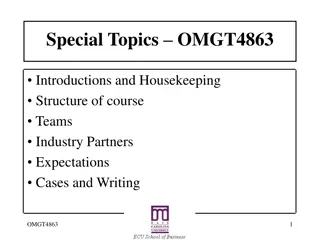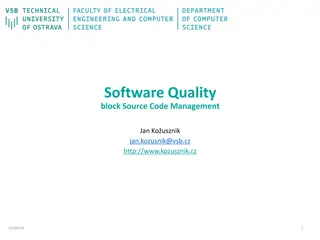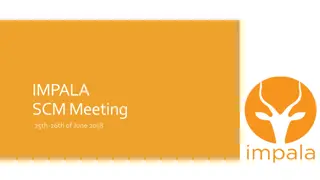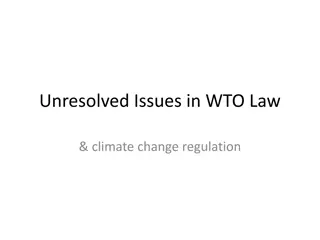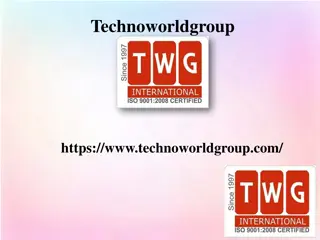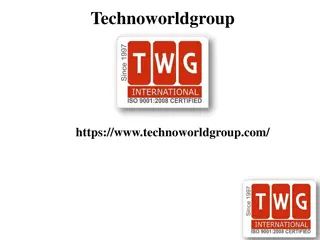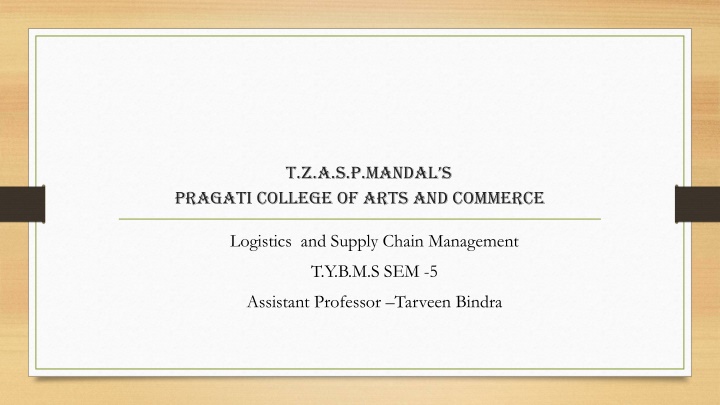
Inventory Management Essentials for Logistics and Supply Chain
Discover the fundamentals of inventory management in the field of logistics and supply chain, including types of inventory, necessity, functionality, and economic order quantity to optimize costs and efficiency throughout the supply chain process.
Download Presentation

Please find below an Image/Link to download the presentation.
The content on the website is provided AS IS for your information and personal use only. It may not be sold, licensed, or shared on other websites without obtaining consent from the author. If you encounter any issues during the download, it is possible that the publisher has removed the file from their server.
You are allowed to download the files provided on this website for personal or commercial use, subject to the condition that they are used lawfully. All files are the property of their respective owners.
The content on the website is provided AS IS for your information and personal use only. It may not be sold, licensed, or shared on other websites without obtaining consent from the author.
E N D
Presentation Transcript
T.Z.A.S.P.MANDALS Pragati college of Arts and commerce Logistics and Supply Chain Management T.Y.B.M.S SEM -5 Assistant Professor Tarveen Bindra
SUBJECT: LOGISTICS unit 3. Inventory management and inventory control Prof. Tarveen Bindra
INTRODUCTION TO INVENTORY MANAGEMENT The term Inventory refers to Any idle Resource that can Be put some Future use. Hence, inventory can be man-hourS, machine Hours, Materials, Spares, Products, Packages, Tools,etc.
NECESSITY OF INVENTORY Irregular supply Uncertain lead time Fluctuating demand pattern Bulk discount Economy of sale transportation Protection againts inflation Reduction in ordering Costomer service level Continuity supply chain
Inventory Functionality Geographic Specialization Decoupling Balancing supply and demand
Types Of Inventory 1.Based on physical form Raw materials inventory Work in process inventory Finished good inventory
2. Based on inventory Position In the supply chain I)Supplier II)Manufacturer III)WholesalerWholesaler IV)Retailers
3. Based cost nventory performance Cycle Average inventory Cycle inventory Safety stock Transmit inventory 4. Inventory cost Material cost Ordering cost or procurement cost Inventory carrying cost
5. Inventory management Quantity Timing
Economic Order Quantity Economic order Quantity or economic Lot size is that Order quantity which resultS in minimum Total inventory cost. Total cost= Ordering cost+ inventory . Carrying cost + material cost
Assumption and Limitations Material cost Ordering cost Inventory carrying cost EOQ model Annual demand Demand Is ever Throughout the year Lead time is constant Each order receive in a single delivery
Re-ordering level EOQ gives answer to the question How much Is the Optimal quantity To order . Re-order level Answers the second Question when is the Optimum time to plan Order or in other word What is the Optimal Time to plan Order Or in other Words, What is the optimal stock Level at which Order should Be placed For next Consignment.
Inventory control technique Inventory control is the technique of maintaining the size of the inventory at some desired level keeping in view the best economic interest of an organization
A list of commonly used inventory control technique is given below:- ABC analysis HML analysis VED analysis SDE analysis GOLF analysis SOS analysis FSNanalysis XYZ analysis
MRP-I (manufacturing requirements planning) Definition: It is the Process of identifying Requirement of all Materials to be purchased, finalizing Their specifications and quantities and Identifying Supplier for procurement of these materials.
Advantages of MRP 1. Accurate estimation of material requirement and their schedule 2. Reduction in inventory cost 3. Increase in overall efficiency of logistical management 4.Higher Reliability 5. Better response to market
Disadvantage of MRP 1. Increase ordering cost 2. Higher transportation cost 3.Potential hazard of production (slow down or shut down) 4.Use of standardized software package may be difficult
MRP-ii ( manufacturing requirements planning) Definition:- Manufacturing requirements planning Is associated with Estimation Of all resources Or required assets Needed to achieve ObjectiveS specified In master production Schedule i.e Mps.
DRP(distribution requirements planning) Definition: to maximize the efficiency of distribution System, The scheduling Of each sku(stock keeping unit) Is to be done For each Distributing centEr. The process Which achieveS this purpose Of maximizing Distribution Efficiency By identifying Various requirements Related to Distribution is Called distribution requirements planning.
Advantages of DRP 1.Helps in finalizing the production schedule for each SKU 2.Decreases the warehouse cost 3.Economic order Quantity can be determined for each SKU 4. Reduces inventory level 5.Helps to identify demand pattern
Disadvantage of DRP 1. Not 100% reliable 2. Over or under estimation of demand can make DRP unrealistic 3. Problem of coordination between various agencies
Q and P Models of Inventory Control (a) Fixed Order Quantity System (Q system) (b)Fixed Order Interval System (P System)
Some More Inventory Control Techniques Two bin system Kanban Just in time (jit) Vender managed inventory (vmi)
Inventory Valuation Fifo Method (first in first out) Lifo method (last in first out) Average cost method
Logistics Costing Introduction:- logistics costing aims at identifying costs associated with various logistical activities. These activities can be transported, warehousing, order processing, order management, packaging,etc. Cost analysis is necessary as the organization would like to know whether the costs incurred an different activities are justified in term of their relevant benefits.
Activity Based Costing (ABC) Activity based Costing is a Costing method that identifies activities in an organization and assigns the cost of each activity to all products and services according to the actual consumption by each. Therefore this model assigns more indirect costs into direct costs compared to conventional costing.
Methods of ABC is: Identify activities necessary to be performed for each product, service of customer. After identifying activities, try to identify costs associated with each activity. Determine cost drivers, i.e. factors influencing or deciding the individual costs. Calculate cost under each cost head.
Comparison between abc and mission based costing ACTIVITY BASED COSTING MISSION BASED COSTING 1. It is reactive in nature. 2. ABC is focused on individual activities. 3. ABC analysis the activities perfomed during a specified time period say a quarter or a year. It is analytical in nature. 4. It s object is to improve next round of performance by improving upon the last performance. 1. It is pro-active in nature. 2. Mission based costing is focussed on the whole mission. 3. Mission based costing planning oriented. It aims at budgetory control of individual mission. 4. It objective is to improve present round of performance by doing proper planning in advance.
Total Cost Approach The total cost method normally consists of subtracting bid price from the actual cost of performance and adding profit to the resulting amount. This approach is heavily disfavored by the boards and courts.
Benchmarking Introduction: Benchmark is the process Of setting up Standard of performance. CompaRision
Forms Of Benchmarking 1. Internal benchmarking 2. External benchmarking 3. Quantitive benchmarking (terms of numbers) 4. Process Benchmarking
Performance Measurement Introduction: Performance measurement also known as audit. It identify area For improvement Or changes, etc.
Main Areas Of Performance Measurement 1) Assessment Of goal Achievement and resources Development: The Performance measureS used for Above Purpose Are classified In 3 categories: 1. Monitoring Measure . 2. Controlling measure 3. Directing measure 2) Assessment of business Process and individual Activity: 1. Activity based Measure 2. Process based Measure
Internal Performance Measurement 1. Time 2. Cost 3. Costomer service 4. Quality 5. Assets management 6. productivity
External Performance Measurement 1. Customer Perception And satisfaction level : costomer opinion Is sought About following points:- I) Product available in the market. Ii) Product quality. Iii) Product features & benefits. Iv) Information available to customer. V) After sales service Or product service.
2. Competitors Performance: I) Customer service Ii) Transportation and warehousing Costs Iii) Production costs Iv) New product Development V) After sales service
Logistical Network Analysis Introduction: Logistical network analysis means Identifying the location of plants, warehouses, Distribution Centers,etc. It helps to minimize the logistical cost.
Objectives and Importance of logistical Network Analysis Logistical Network analysis is Important for The following reason: 1. Quick response to market change: I) Changing customer service requirement Ii) Changing Customers Iii) New market segment
2. Changes in Corporate policy I) Changes in product Line Ii) Downsizing Iii) Re-engineering
3. Revitalize Customer service: I) Lead time Ii) Response time 4. Cost control
RORO Ro-Ro is an acronym for Roll-on/roll-off. Roll- on/roll-off ships are vessels that are used to carry wheeled cargo. Due to problem in loading and unloading of goods the Concept of RORO was introduced.
LASH A lash Vessel stands For lighter Aboard ship, and it s Primary function It loading and unloading barges. It Was developed In Response to a Need to transport Lighters, a type of (usually but not always) Unpowered Barges, between Inland waterways Separated by open seas.
MILK RUN The milk- run is generally An in-plant Transportation system Where your materialS are transported From a center area To different Assembly areas within your facility. It also ensures Just-in-time Delivery And reduces The possibility Of waste and material damage.
Thank You Thank You

